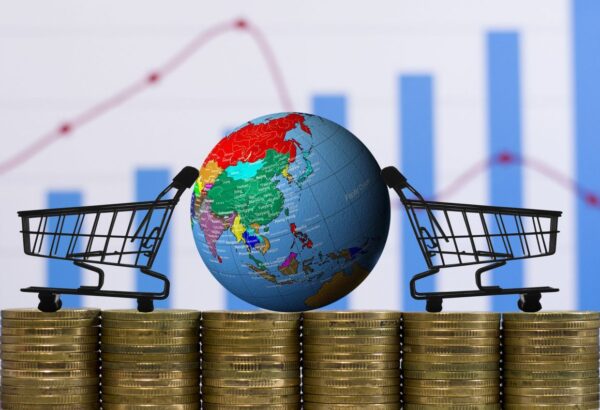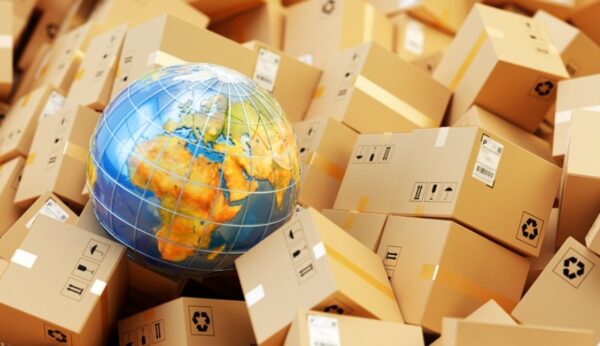The year behind us has been incredibly challenging for people worldwide, especially since the pandemic is still going strong. On the other hand, it also showed us just how resilient we can be. Despite a sensitive international logistics system, cross-border import and export numbers hit $5.6 trillion in Q3 of 2023, setting a new record.
What to Expect From International E-commerce in 2023

Countless entrepreneurs and employees from across the globe stand behind this remarkable growth. We can hope cross-border e-commerce will keep growing and getting us more globally connected as we head into 2023. Here are the trends to keep an eye on in the year in front of us.
Going Local

If you asked around, no cross-border seller would tell you they expected their containers filled with goods would spend days stuck at a seaport. Yet, these delays were unavoidable in 2023, with expensive and unreliable sea shipping as well as price jumps in the air freight sector.
Certain e-commerce companies recognized how important delivery predictability is, so they chose to transport their cargo to warehouses in destination countries. That way, they’d be able to start the delivery process as soon as buyers place an order. It’s a significantly different model than shipping goods directly to buyers, but it still allows sellers to preserve efficiency and reduce their costs, particularly during peak season.
According to China’s Ministry of Commerce, Chinese companies (including logistics companies and e-commerce platforms) built over 1,900 warehouses overseas, taking up about 1.254 million square feet. These warehouses were mostly built in the United States, Asia, and Europe. Companies operating overseas warehouses offered storage, last-mile delivery, but also after-sale services, compliance consulting, supply chain financing, and local marketing.
We can expect more of these warehouses to spring up in 2023, so the practice of cross-border sellers moving their products overseas first will continue. It’s a great way to ensure timely delivery, and it makes buyers feel almost no difference between making an order from a site on another continent and from one located in their country.
Decentralization Is the Next Big Thing

While leveraging established e-commerce sites for cross-border business operations is still a common practice, decentralization is an upcoming trend that the whole industry should pay attention to. Software-as-a-service (SaaS) tools like Shopify and Magento have helped amplify the boom of decentralized e-commerce, at least when it comes to independent websites, live streaming, and social media.
These tools have helped people get into global trade, establish stores, find suppliers, and easily handle payments, logistics, and other aspects of their business. Thanks to these platforms, countless individuals worldwide with some influence on social media sites or among their peers became successful dropshippers.
This trend is truly global, with success stories from America to Kenya. The fact that their e-commerce capacities are limited at best doesn’t matter. Even in cases where their supplier is not available in the region, people have turned to proxies for jd.com and other websites to offer products locally.
According to Grand View Research, the global dropshipping market will grow to $557.9 billion by 2025, with a compound yearly growth of 28.8%. Decentralization will play a significant role in the evolution of e-commerce, offering growth opportunities to everyone involved in global trade. It’s not just about competing in the same category or on a single marketplace – the way you connect products with the customers is just as important.
No source of products is off-limits anymore, so monitoring trends in local markets alone is not enough. Even shoppers themselves have found ways to gain access to marketplaces they usually wouldn’t be able to use.
With the internet getting more and more restricted (by region-based limitations, local laws, censorship, etc.), proxy servers are becoming a crucial part of the global e-commerce equation. You can learn more about what cross-border proxies are and how to take advantage of them at iproyal.com.
Changes in Marketing Approach

Along with decentralization, we’re seeing significant changes in online shoppers’ preferences. It’s clear that there’s no universal solution for efficient e-commerce marketing in different countries, so companies will keep experimenting with various marketing tools and approaches to identify their target demographics and their habits.
TikTok, an online video platform with more than a billion active users, is an excellent example of this. Many are trying to turn it into a shoppable channel. It makes perfect sense with such a large user base. They’re posting videos explaining what their products are, how they work, along information on where to buy them. Certain videos focused on toys have millions of views, leading to thousands of purchases in just a few days.
Until recently, live streaming has been a fantastic way for companies to communicate with local clients. However, certain B2B (business to business) suppliers discovered that it also works great for them if in-person communication is impossible due to the pandemic. The only issues they’re left with solving are language barriers and time differences.
Sustainability Improvements

It’s no secret that sustainability is becoming a key customer loyalty driver and a growing consideration of retailers. According to WEF (World Economic Forum), increasing delivery demands will result in a 36% rise of delivery vehicles in urban areas. This will have a massive impact on emissions and traffic jams in the top 100 cities globally.
Slower and cheaper delivery is a great way to reduce carbon footprint and provide the customers with an option to reduce carbon costs. Packaging is also an area where brands are looking to offer more sustainable choices in the years ahead. A lot can be done here, from properly sizing boxes for the products they contain to recyclable or reusable packaging protection materials. These practices help the environment but also reduce costs for the brands.
Sustainability is not an emerging trend only across shopper touchpoints. The number of brands that are trying to ensure all their facilities have a neutral carbon status is also increasing. Whether it’s warehouses or the final mile delivery carriers, the benefits of becoming more sustainable are a plus for both the seller and the shopper.
Final Thoughts
One thing is certain – cross-border e-commerce will keep gaining momentum in this decade as the global infrastructure improves. Every player in this arena can benefit from this new way of international trading. They only need to make sure they pick the right products and find their own way of reaching the target audience.



















